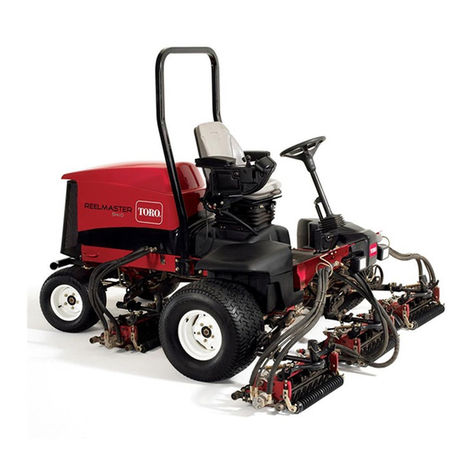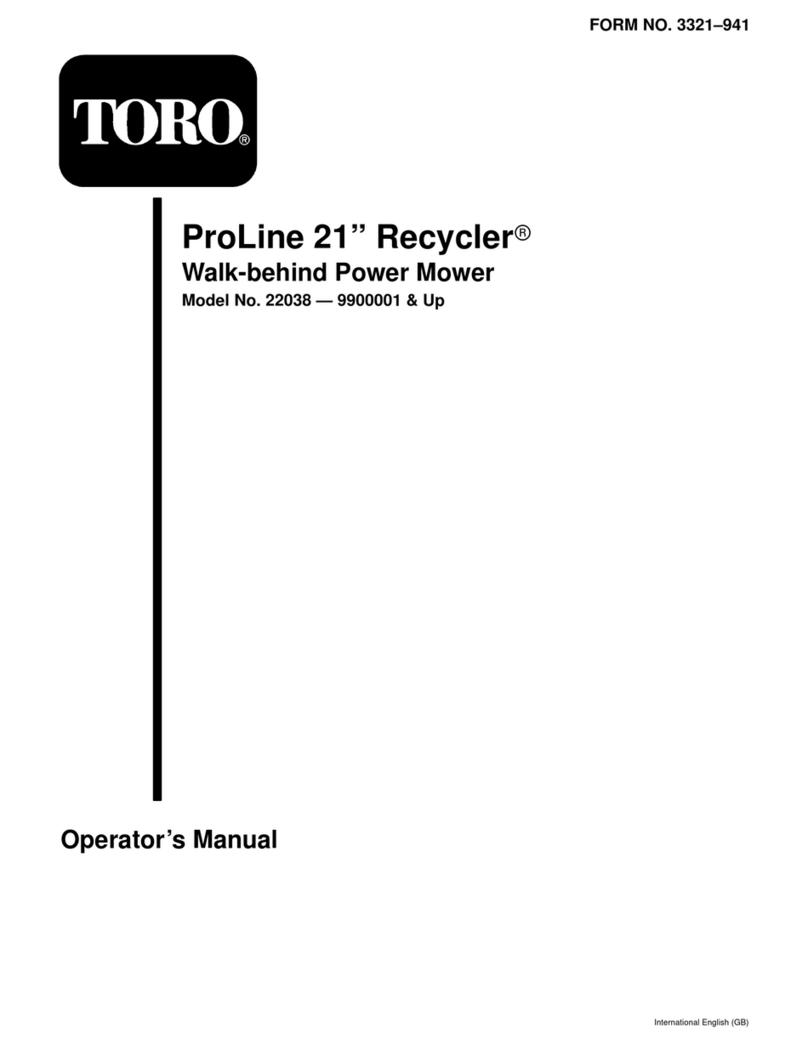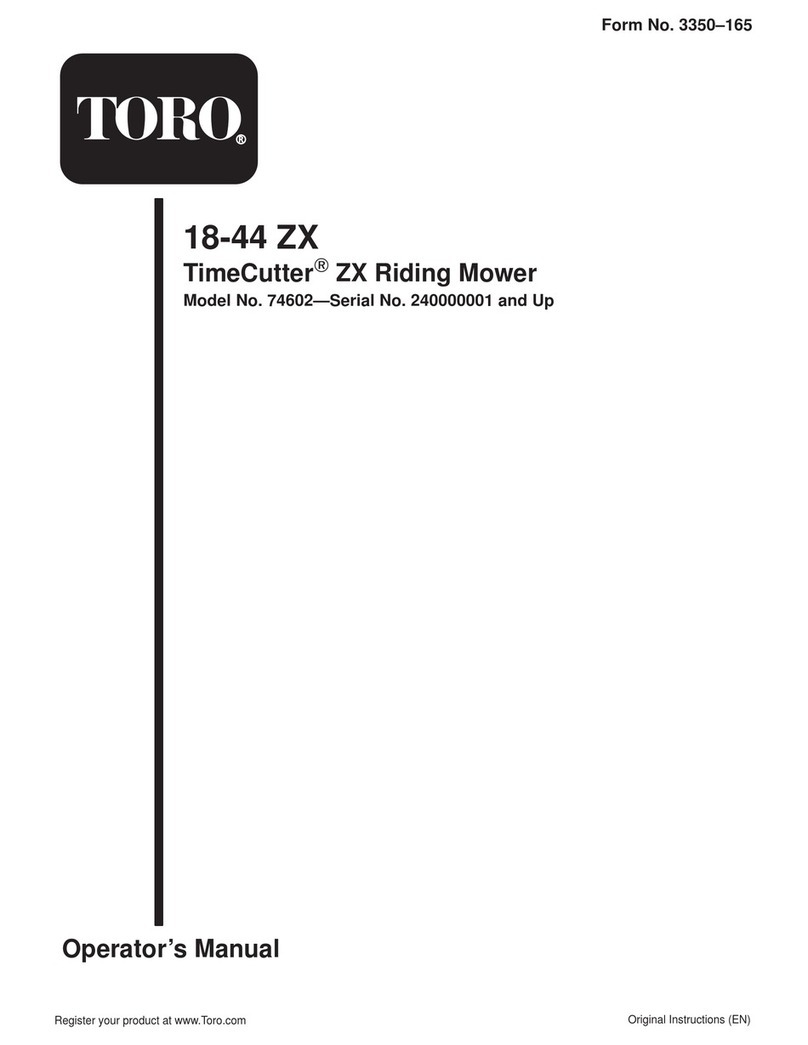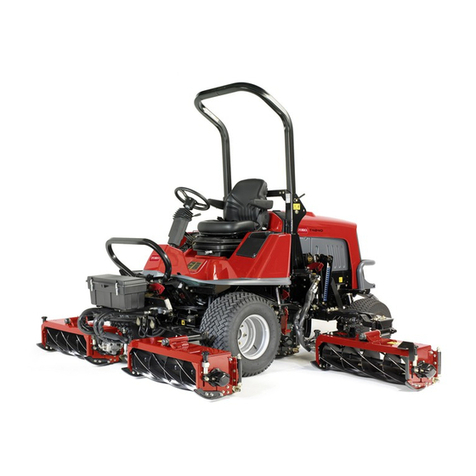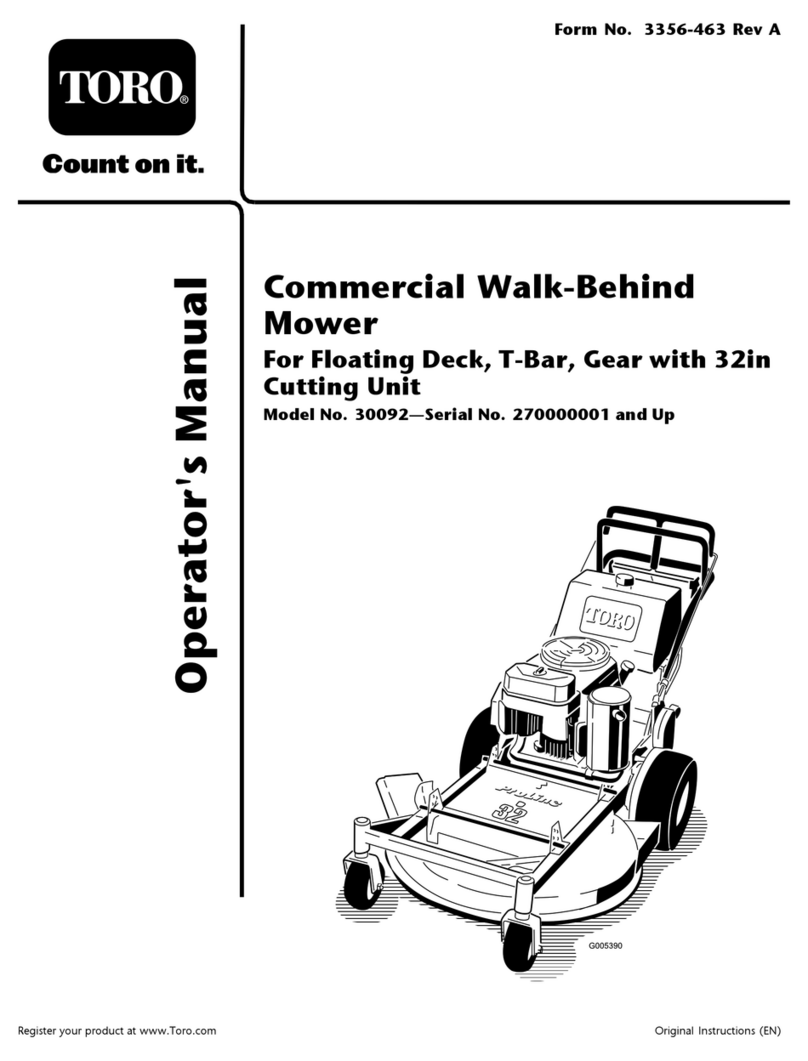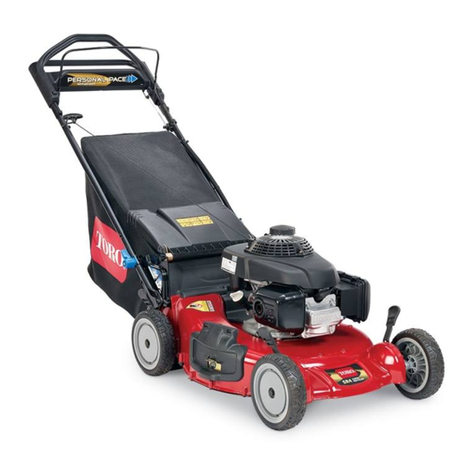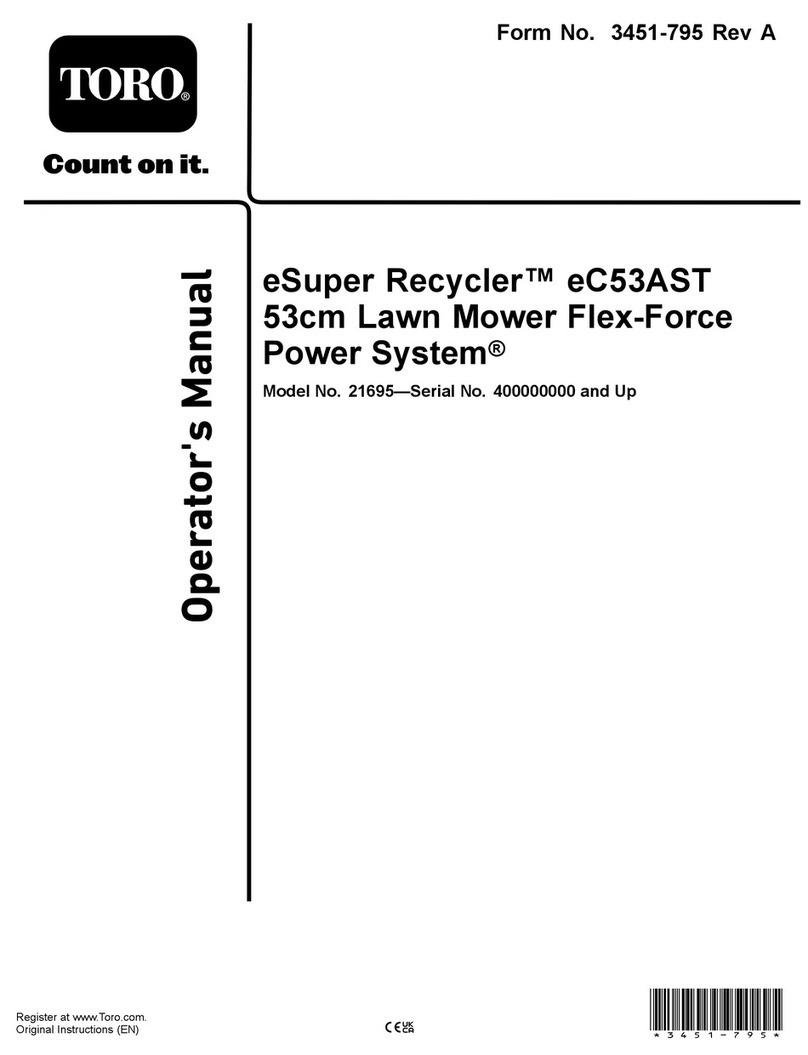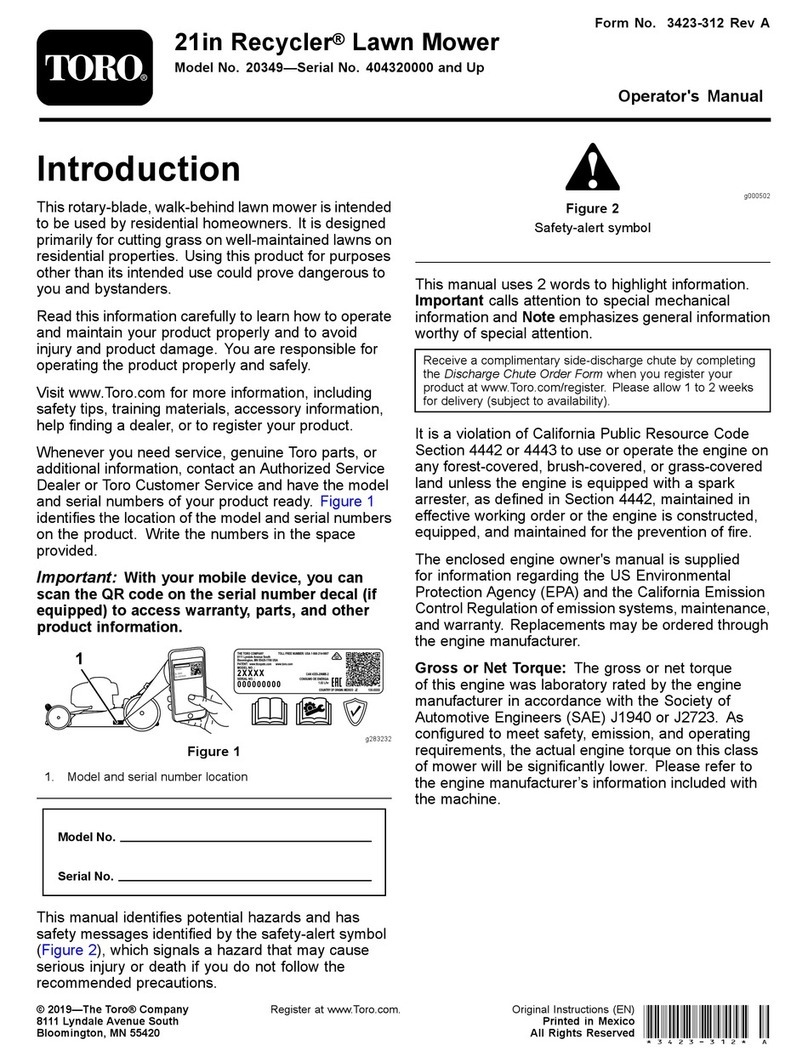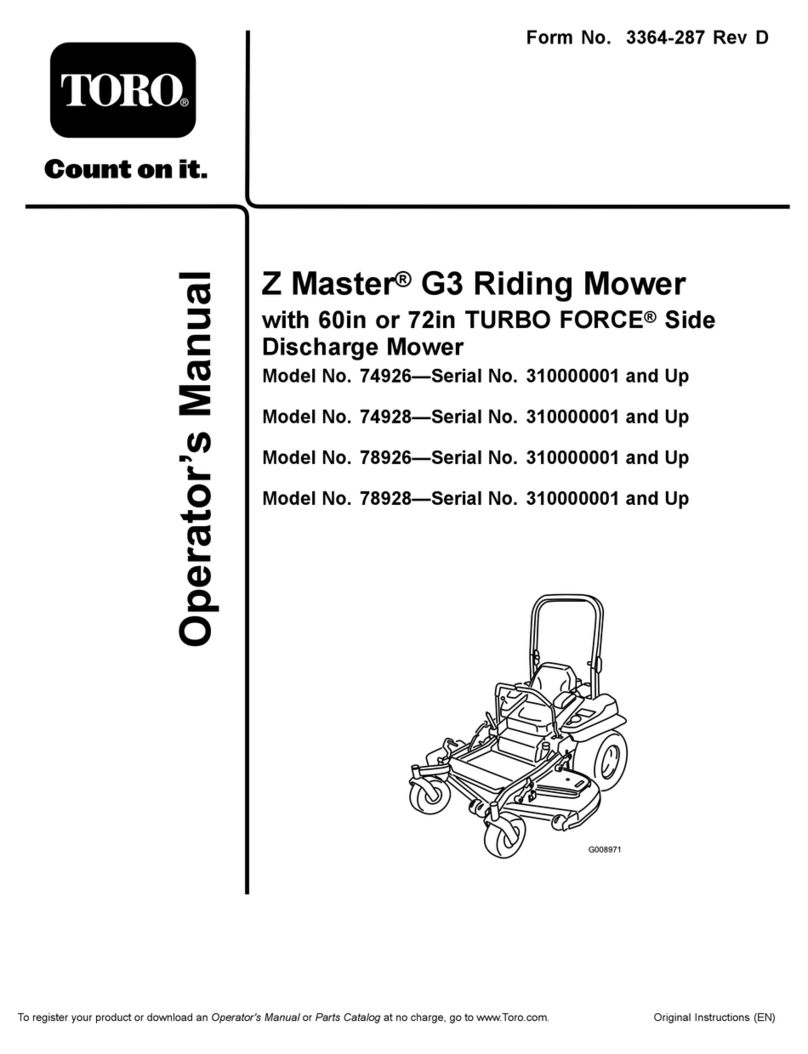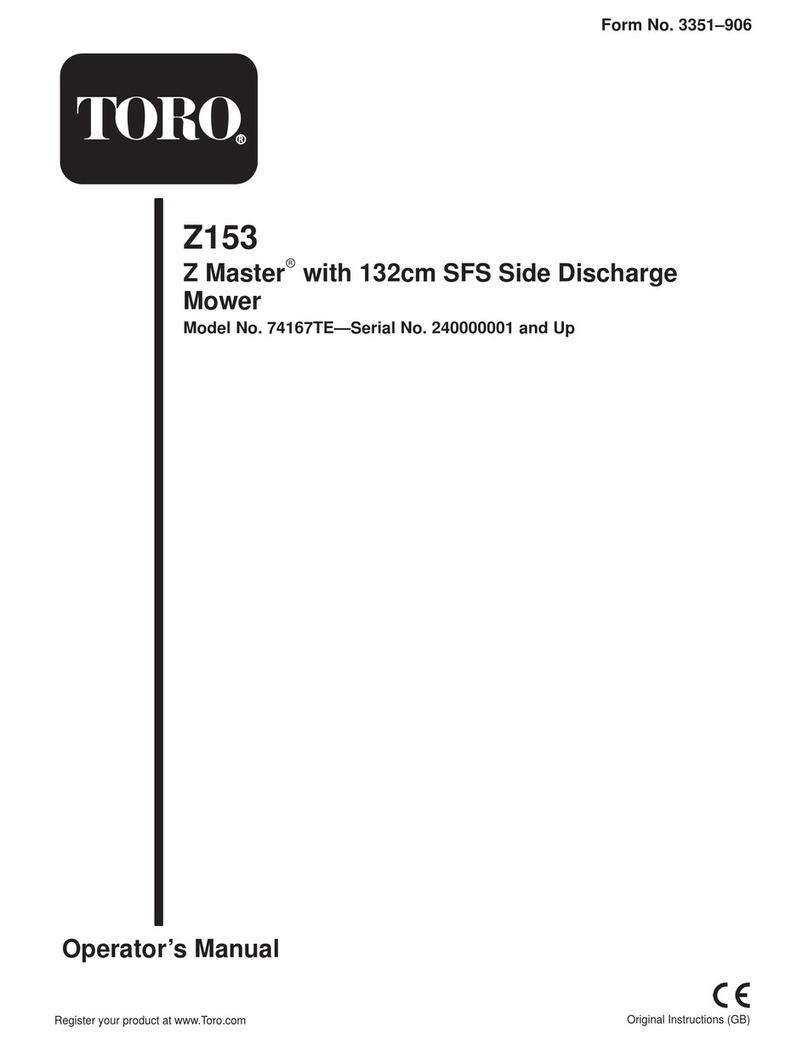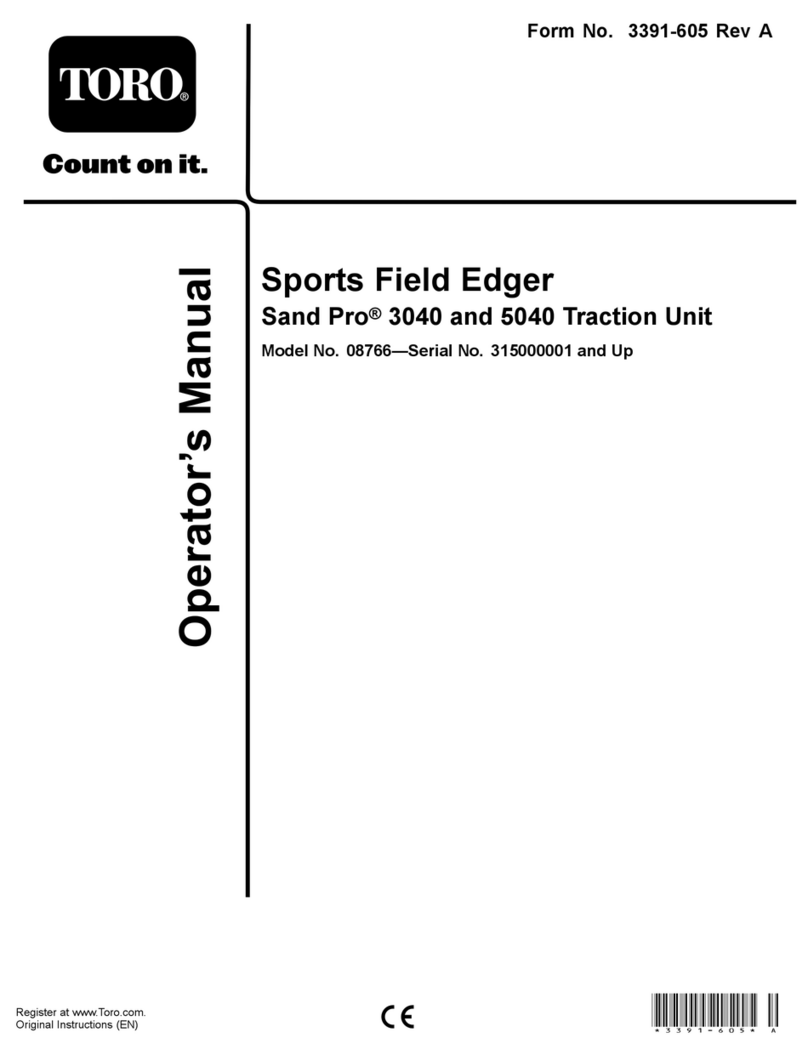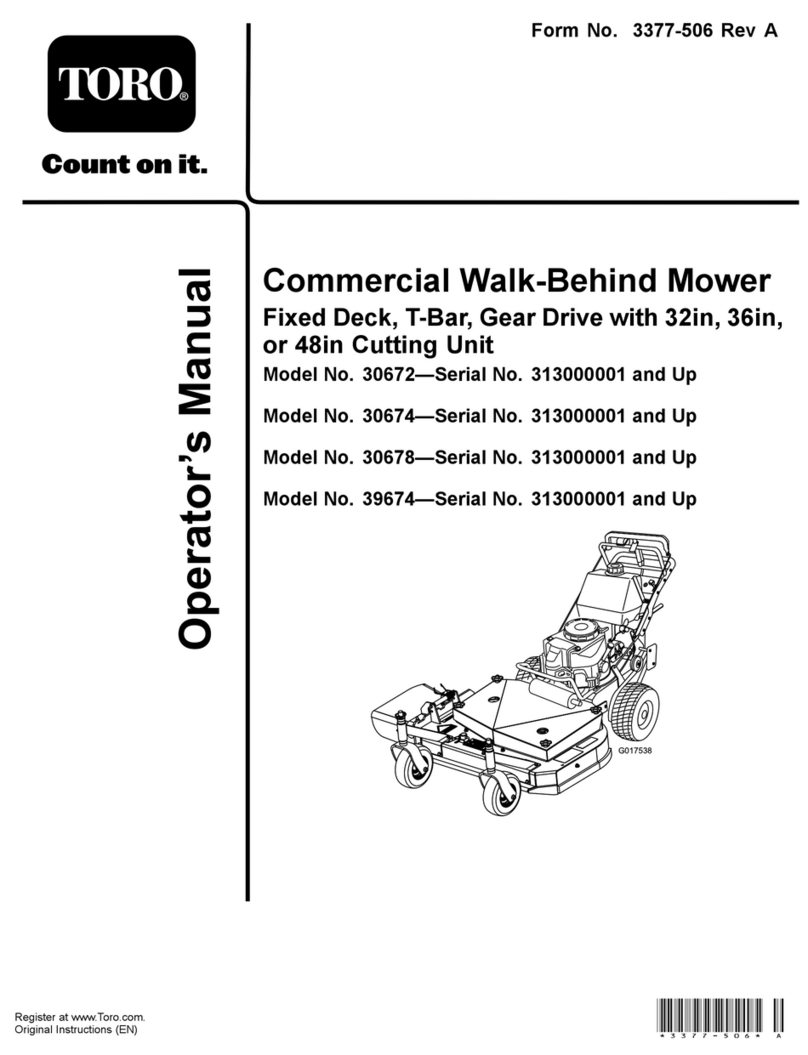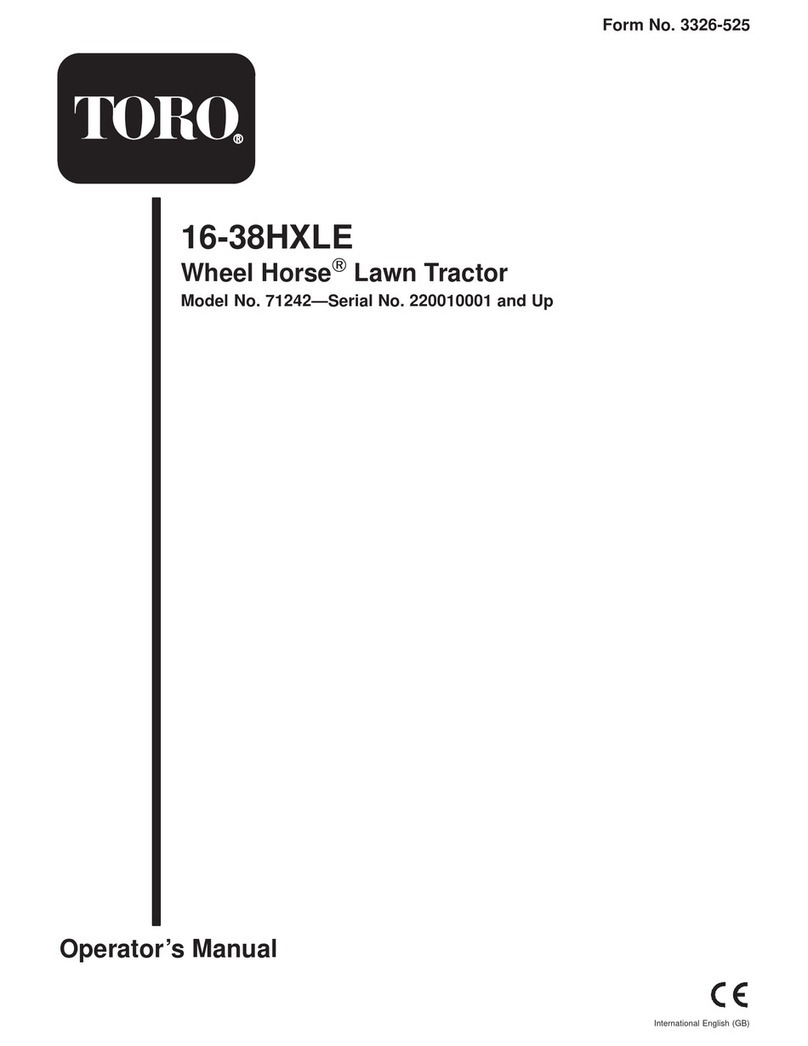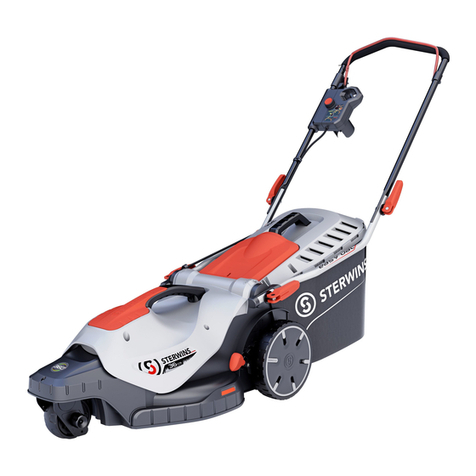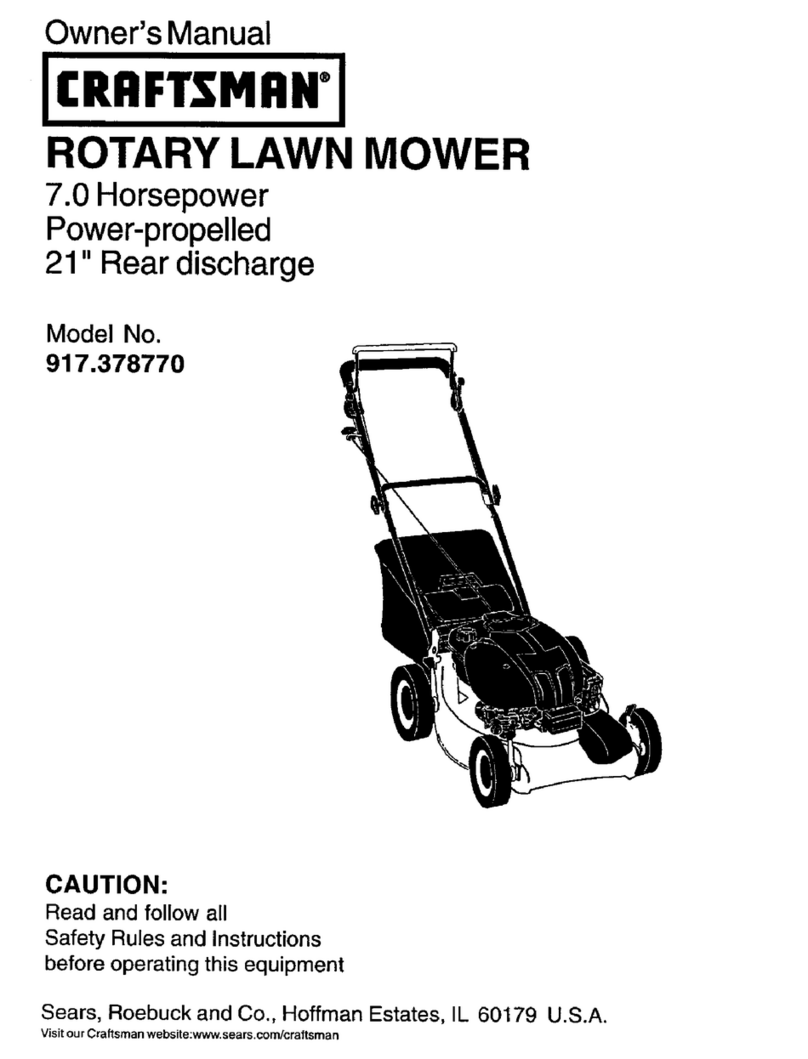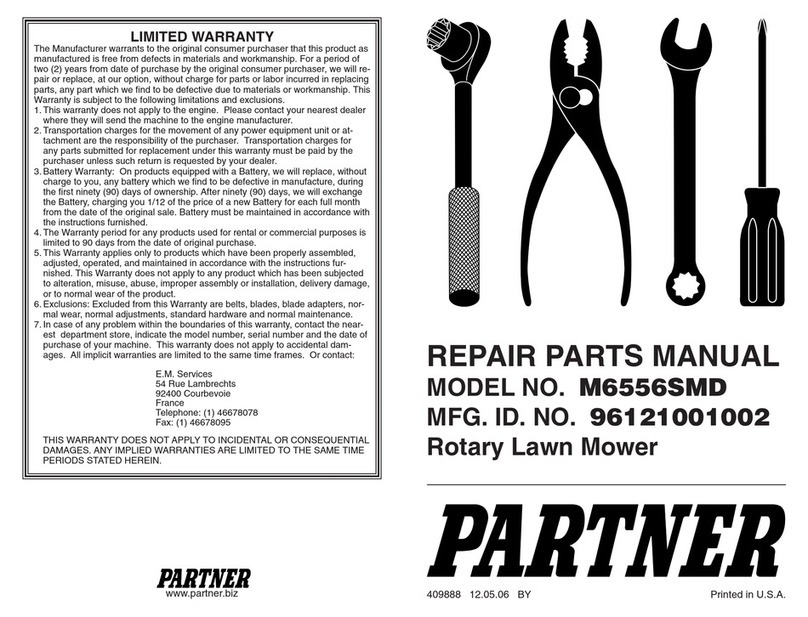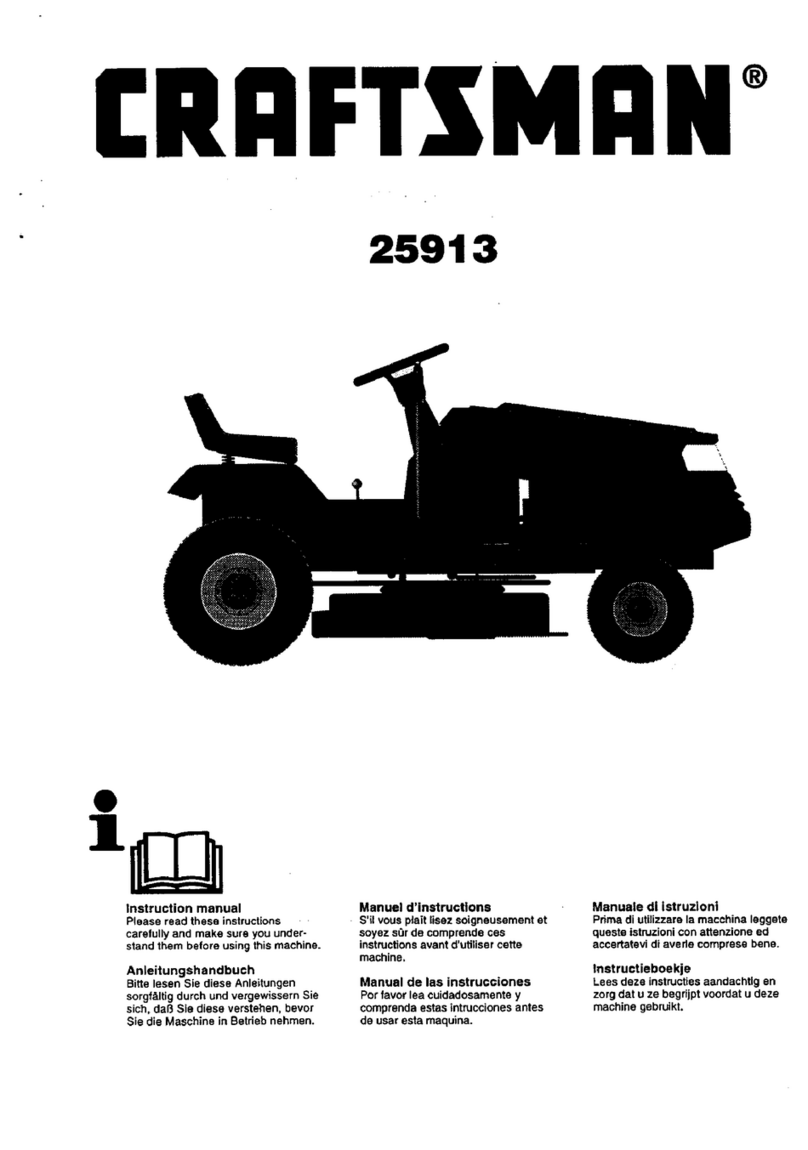
2
All Rights Reserved
Printed in the USA
W2008 by The Toro Company
8111 Lyndale Avenue South
Bloomington, MN 55420-1196
CALIFORNIA
Proposition 65 Warning
Diesel engine exhaust and some of its constituents
are known to the State of California to cause
cancer, birth defects, and other reproductive harm.
Warning
Important The engine in this product is not equipped
with a spark arrester muffler. It is a violation of California
Public Resource Code Section 4442 to use or operate this
engine on any forest-covered, brush-covered, or
grass-covered land as defined in CPRC 4126. Other states
or federal areas may have similar laws.
Contents
Page
Introduction 3. . . . . . . . . . . . . . . . . . . . . . . . . . . . . . . .
Safety 3. . . . . . . . . . . . . . . . . . . . . . . . . . . . . . . . . . . . .
Safe Operating Practices 3. . . . . . . . . . . . . . . . . . . .
Toro Riding Mower Safety 5. . . . . . . . . . . . . . . . . .
Sound Pressure Level 6. . . . . . . . . . . . . . . . . . . . . .
Sound Power Level 6. . . . . . . . . . . . . . . . . . . . . . .
Vibration Level 6. . . . . . . . . . . . . . . . . . . . . . . . . . .
Safety and Instruction Decals 7. . . . . . . . . . . . . . . .
Specifications 11. . . . . . . . . . . . . . . . . . . . . . . . . . . . . . .
General Specifications 11. . . . . . . . . . . . . . . . . . . . .
Setup 12. . . . . . . . . . . . . . . . . . . . . . . . . . . . . . . . . . . . .
Loose Parts Chart 12. . . . . . . . . . . . . . . . . . . . . . . . .
Install Wheels 13. . . . . . . . . . . . . . . . . . . . . . . . . . . .
Install Steering Wheel 13. . . . . . . . . . . . . . . . . . . . .
Activate, Charge and Connect Battery 13. . . . . . . .
Check Angle Indicator 14. . . . . . . . . . . . . . . . . . . . .
Install Hood Latch
(European Compliance) 14. . . . . . . . . . . . . . . . . . .
Install Exhaust Guard
(European Compliance) 15. . . . . . . . . . . . . . . . . . .
Install ROPS 15. . . . . . . . . . . . . . . . . . . . . . . . . . . . .
Install Front Lift Arms 15. . . . . . . . . . . . . . . . . . . . .
Mount Carrier Frames To Cutting Units 16. . . . . . . .
Mount Cutting Units 17. . . . . . . . . . . . . . . . . . . . . . .
Mount Cutting Unit Drive Motors 18. . . . . . . . . . . .
Adjust Lift Arms 18. . . . . . . . . . . . . . . . . . . . . . . . .
Before Operating 20. . . . . . . . . . . . . . . . . . . . . . . . . . . .
Check Crankcase Oil 20. . . . . . . . . . . . . . . . . . . . . .
Fill Fuel Tank 20. . . . . . . . . . . . . . . . . . . . . . . . . . . .
Check Cooling System 21. . . . . . . . . . . . . . . . . . . . .
Checking the Hydraulic System 22. . . . . . . . . . . . . .
Check Tire Pressure 22. . . . . . . . . . . . . . . . . . . . . . .
Check Reel To Bedknife Contact 22. . . . . . . . . . . . .
Check Torque Of Wheel Nuts 23. . . . . . . . . . . . . . .
Controls 24. . . . . . . . . . . . . . . . . . . . . . . . . . . . . . . . . . .
Operation 26. . . . . . . . . . . . . . . . . . . . . . . . . . . . . . . . . .
Starting/Stopping Engine 26. . . . . . . . . . . . . . . . . . .
Bleeding Fuel System 26. . . . . . . . . . . . . . . . . . . . . .
Check Operation Of Interlock Switches 27. . . . . . . .
Towing Traction Unit 27. . . . . . . . . . . . . . . . . . . . . .
Operating Characteristics 27. . . . . . . . . . . . . . . . . . .
Mowing Techniques 28. . . . . . . . . . . . . . . . . . . . . . .
After Mowing 29. . . . . . . . . . . . . . . . . . . . . . . . . . . .
Selecting Clip Rate (Reel Speed) 29. . . . . . . . . . . . .
Standard Control Module (SCM) 30. . . . . . . . . . . . .
Lubrication 32. . . . . . . . . . . . . . . . . . . . . . . . . . . . . . . . .
Maintenance 35. . . . . . . . . . . . . . . . . . . . . . . . . . . . . . . .
Recommended Maintenance Schedule 35. . . . . . . . .
Daily Maintenance Checklist 36. . . . . . . . . . . . . . . .
Service Interval Chart 37. . . . . . . . . . . . . . . . . . . . . .
Hood Removal 37. . . . . . . . . . . . . . . . . . . . . . . . . . .
General Air Cleaner Maintenance 38. . . . . . . . . . . .
Servicing Air Cleaner 38. . . . . . . . . . . . . . . . . . . . . .
Engine Oil and Filter 38. . . . . . . . . . . . . . . . . . . . . .
Fuel System 39. . . . . . . . . . . . . . . . . . . . . . . . . . . . .
Bleeding Air From Injectors 39. . . . . . . . . . . . . . . . .
Cleaning Engine Cooling System 40. . . . . . . . . . . . .
Servicing Engine Belts 40. . . . . . . . . . . . . . . . . . . . .
Adjusting Throttle 41. . . . . . . . . . . . . . . . . . . . . . . .
Changing Hydraulic Fluid 41. . . . . . . . . . . . . . . . . .
Replacing Hydraulic Filter 42. . . . . . . . . . . . . . . . . .
Checking Hydraulic Lines And Hoses 42. . . . . . . . .
Adjusting Traction Drive For Neutral 42. . . . . . . . .
Adjusting Parking Brake 43. . . . . . . . . . . . . . . . . . .
Battery Care 43. . . . . . . . . . . . . . . . . . . . . . . . . . . . .
Battery Storage 44. . . . . . . . . . . . . . . . . . . . . . . . . . .
Fuses 44. . . . . . . . . . . . . . . . . . . . . . . . . . . . . . . . . . .
Backlapping 44. . . . . . . . . . . . . . . . . . . . . . . . . . . . .
Storage 45. . . . . . . . . . . . . . . . . . . . . . . . . . . . . . . . . . . .
Traction Unit 45. . . . . . . . . . . . . . . . . . . . . . . . . . . .
Engine 45. . . . . . . . . . . . . . . . . . . . . . . . . . . . . . . . . .
Electrical Schematic 46. . . . . . . . . . . . . . . . . . . . . . .
Hydraulic Schematic 47. . . . . . . . . . . . . . . . . . . . . .
The Toro General Commercial Products Warranty 48. .
